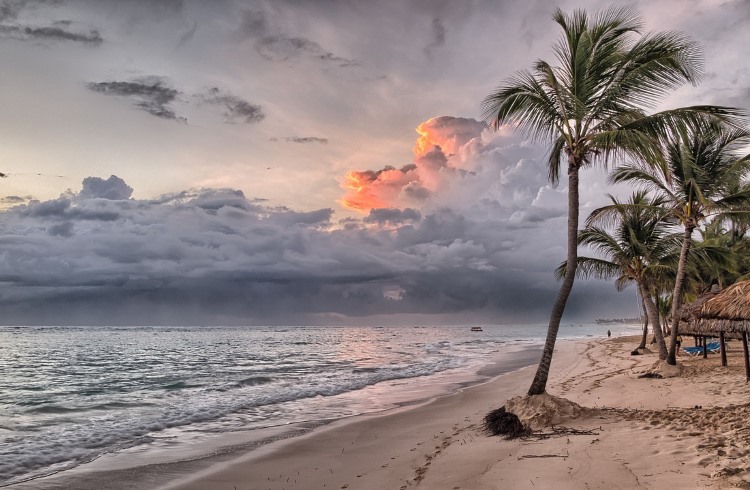Post-Disaster Destinations: Are They Safe To Visit?
It’s normal to wonder if and when you should visit a place that’s recently been hit by a hurricane, earthquake, wildfire, or terror attack. Here’s some advice.
 Photo © Pixabay/Joe Mustang
Photo © Pixabay/Joe Mustang
It's always a shock to hear about places devastated by disaster. In September of 2023 alone, out-of-control fires took lives and land in Hawaii, and an earthquake left death and destruction in Morocco. The massively destructive Caribbean hurricanes of 2017 and 2018 still linger in memory. For travelers, the question is, how soon is it safe to travel to an affected destination? Should you go as soon as the airport opens? Hold off for a while? Or change your plans entirely?
- When will it be safe to travel?
- Why you should still go as soon as it's safe
- How to help an affected destination recover
- Will travel insurance cover you if you go?
When is it safe to travel following a disaster?
It’s not possible to draw a firm line on whether any place is “safe” or not following a disaster. Earthquakes, wildfires, and terrorist attacks can happen at any time, without warning. That being said, the likelihood of being the victim of an earthquake or terror attack is small. These risks shouldn’t deter you from traveling, but you should be prepared in case something does happen.
Hurricanes are somewhat easier to predict, but even there, experts only know a week or so in advance whether a storm is likely to become a hurricane, and the exact path or strength of the storm is hard to pinpoint. Currently, the official hurricane season in the North Atlantic is from June 1 to November 30. Storms can and occasionally do happen outside of this time frame, but it’s rare.
Again, the best plan is to be prepared, and not wait until the last minute to get out of the path of the storm. Here’s what to do in the event of a hurricane.
If a disaster has already happened, whether it’s safe to visit depends on how badly the infrastructure was damaged. Getting around might be challenging, and certain areas might be off limits – destruction to roads and hospitals might put emergency response systems under strain. If some areas are still without electricity, curfews may be in effect because of the elevated risk of crime or injury. If an earthquake has struck, there's a possiblity of aftershocks, which can sometimes be as large or larger than the original tremor.
Natural disasters such as floods can also cause outbreaks of diseases like typhoid or cholera. So it’s wise to check on local conditions before visiting, and use your best judgment.
If the airports are operational, some hotels and major roads are open, the air quality isn't hazardous, and there are no severe shortages of food, water, or power, you can generally assume the destination is safe to visit.
Why you should still go as soon as it’s safe
Many of the places that were affected by recent events, such as the island of Maui in Hawaii, are heavily dependent on tourism. The Caribbean region, in particular, is more reliant on tourism than any other region in the world.
Some Caribbean islands were still recovering from the impacts of 2017 Hurricanes Irma and Maria and 2018 Hurricanes Dorian and Michael when the COVID-19 pandemic hit. So your tourist dollars can go a long way towards aiding their comeback.
How to help an affected destination recover
Bear in mind that the longer a destination goes without visitors, the harder it will be for them to get back on their feet.
Once places are ready to receive visitors, try to spread your dollars across multiple vendors. Consider visiting a place that’s suffered the effects of recent disasters and is now recovering, rather than a place that was left untouched. And instead of spending all your money at a resort, go eat at the local restaurants or buy souvenirs from a local craft stand.
Will travel insurance cover you if you go?
It depends. Depending on your country of residence, if you made your plans and purchased insurance before the hurricane, fire, or earthquake became a known event, you may be covered for trip cancellation if your accommodations at the destination were made uninhabitable or there has been a cessation of travel services for at least 24 hours due to the disaster.
But you wouldn’t be covered if you bought a plan after the disaster, went to the destination, and found your accommodations weren’t habitable due to that storm or disaster.
If you travel to the region shortly after the disaster and make a claim unrelated to that disaster, you would most likely be covered.
And if you bought a plan right now, you would likely be covered against future disasters provided they aren’t currently known or forecasted events (a hurricane or typhoon becomes a known event once it’s given a name – earthquakes, fires, or terrorist incidents become known at the time they happen).
Simple and flexible travel insurance
You can buy at home or while traveling, and claim online from anywhere in the world. With 150+ adventure activities covered and 24/7 emergency assistance.
Get a quote
2 Comments
We are from two countries and i cant select Denamrk? Why is it not om the list?
Why won't that "cookies"popup disappear?